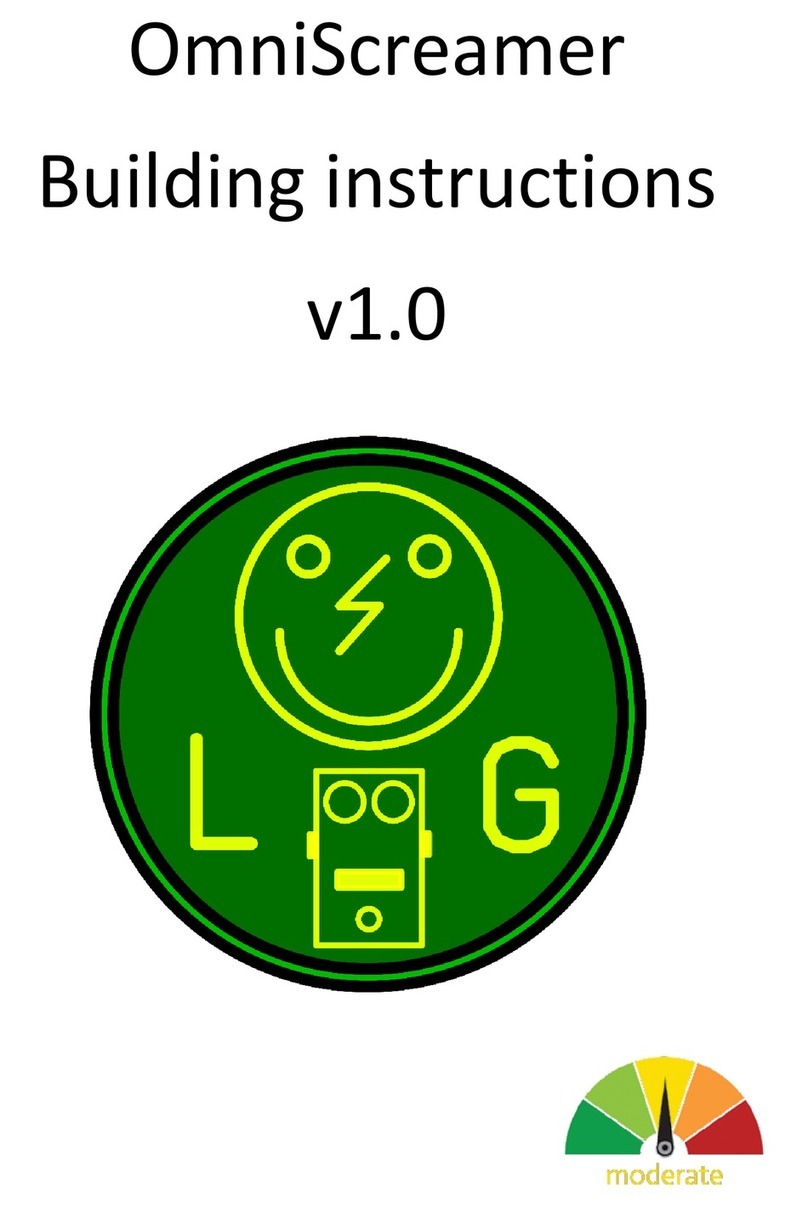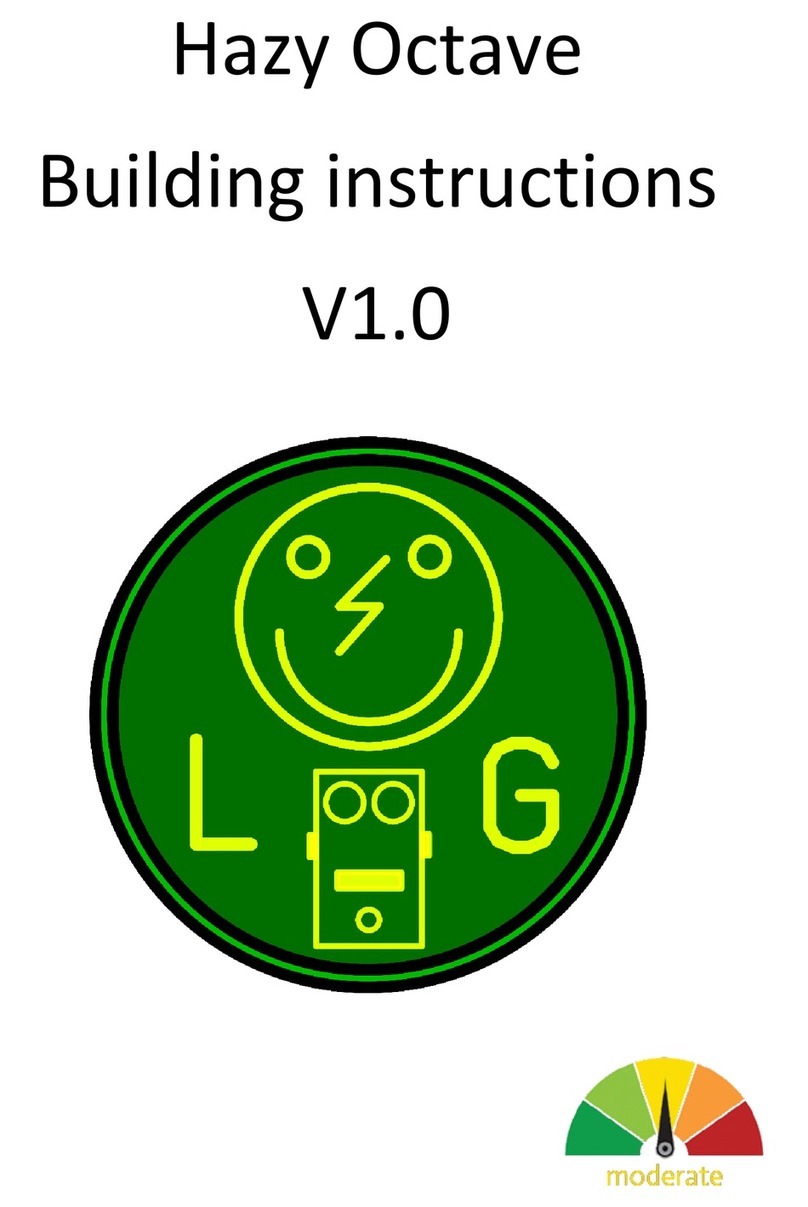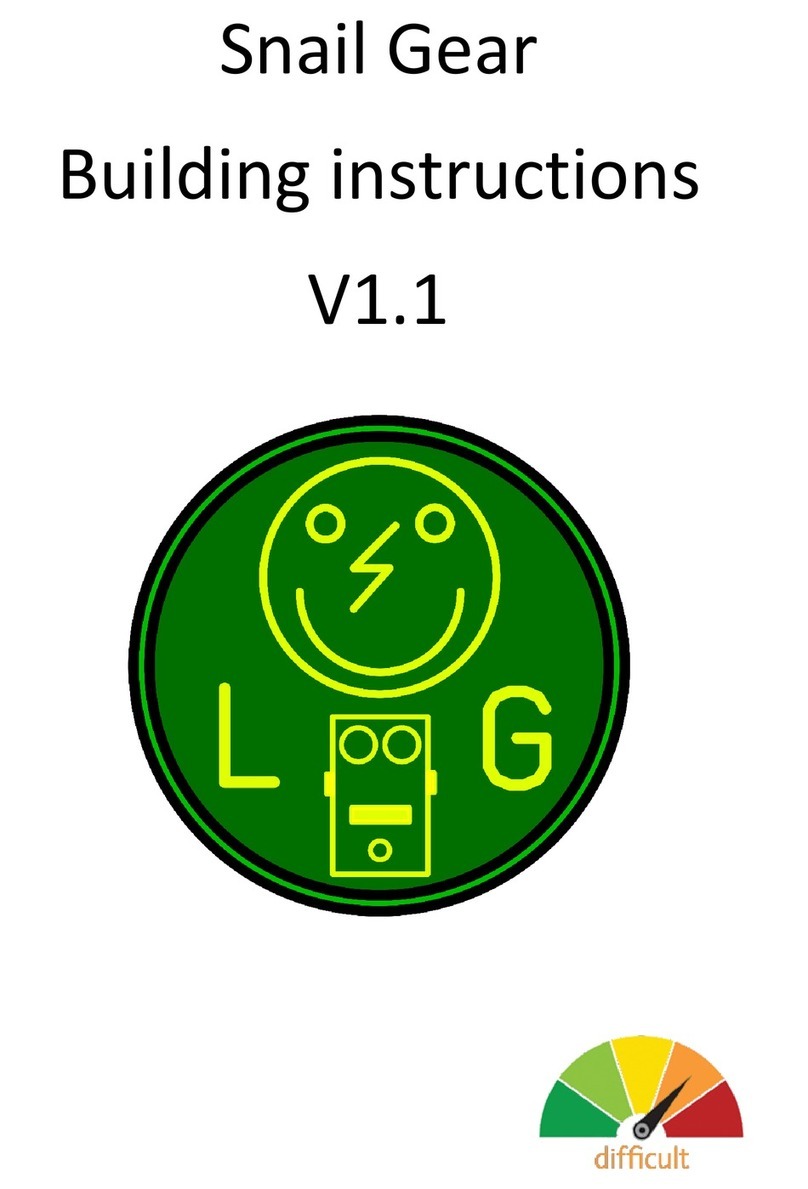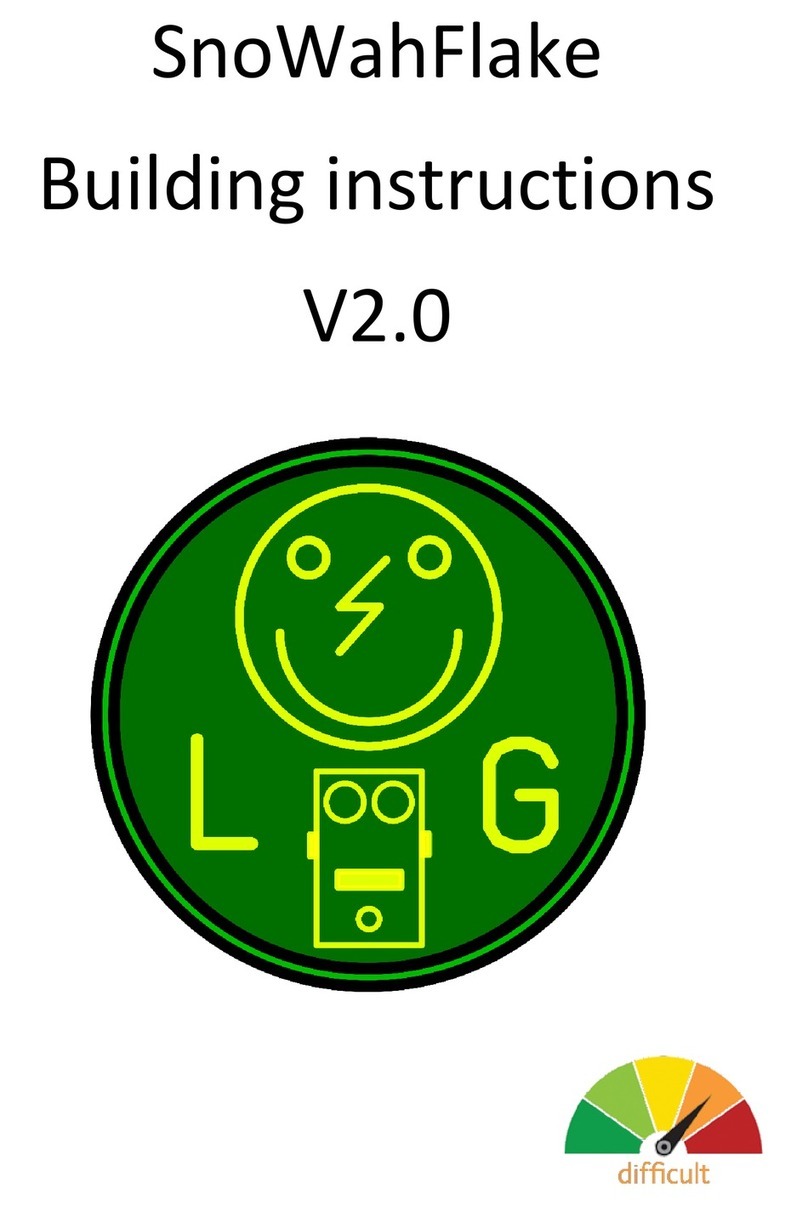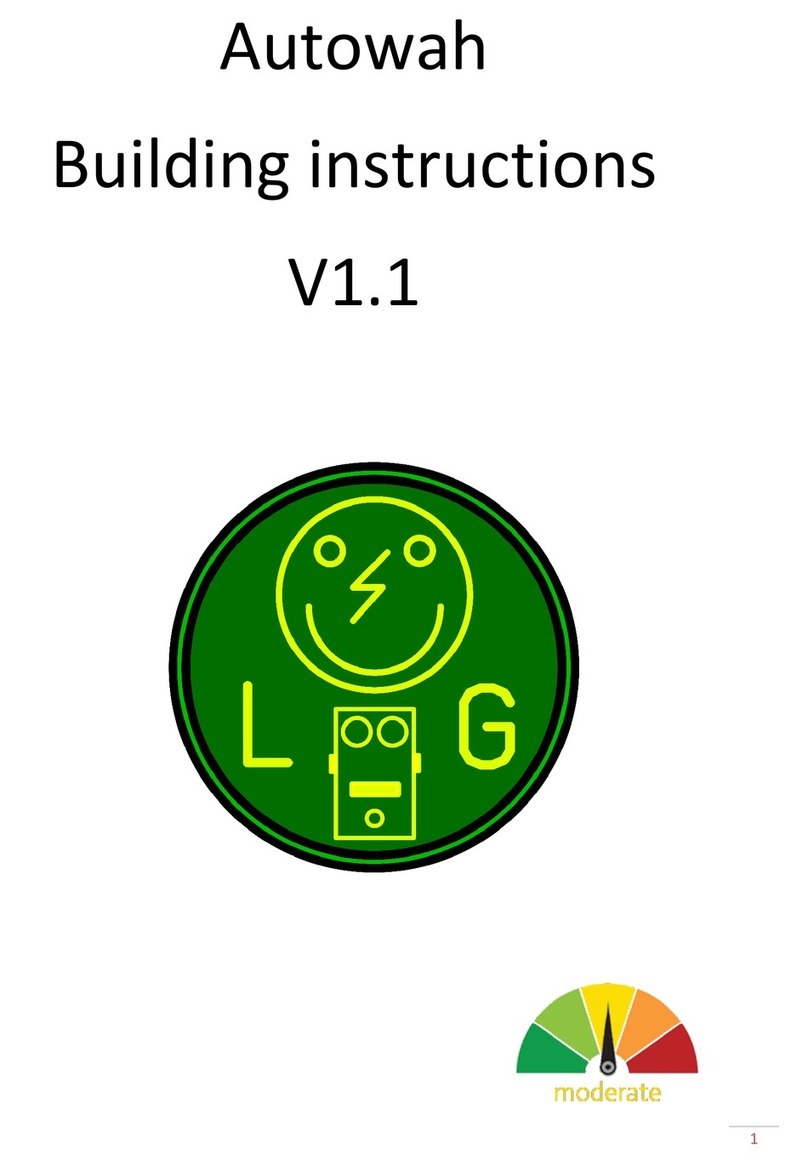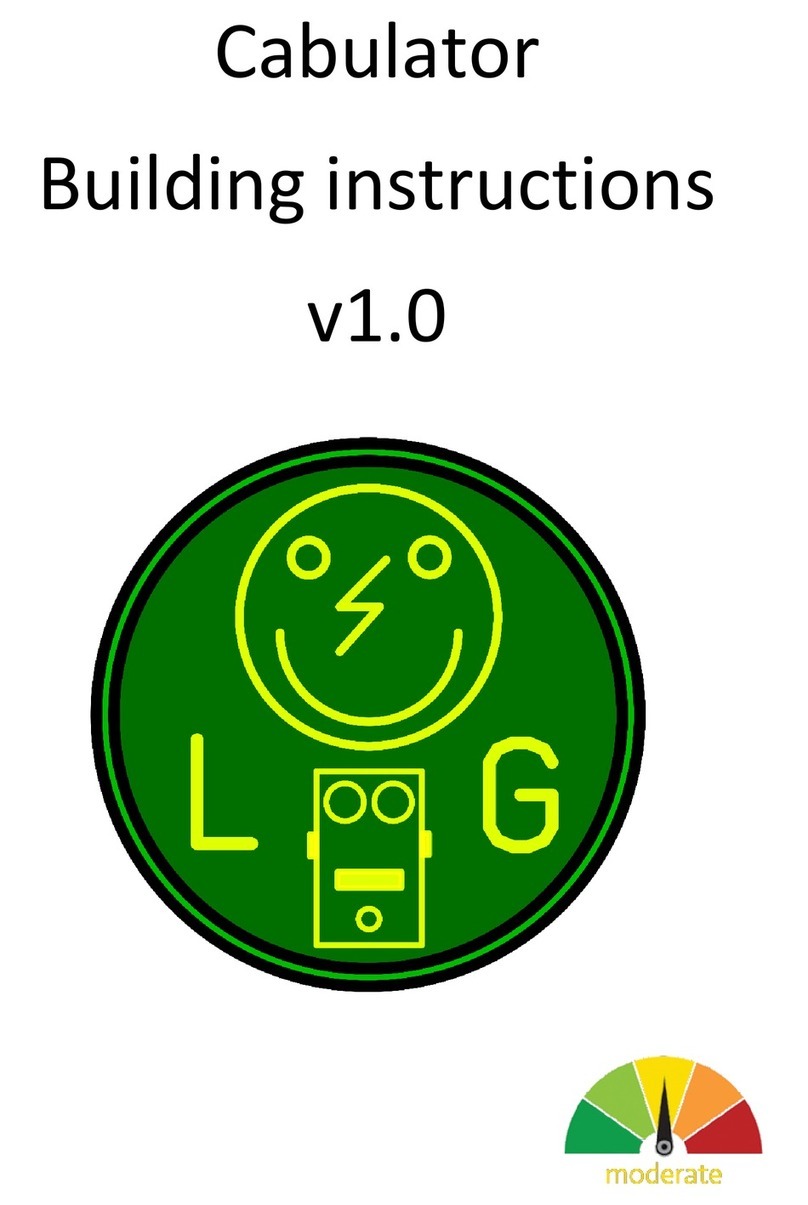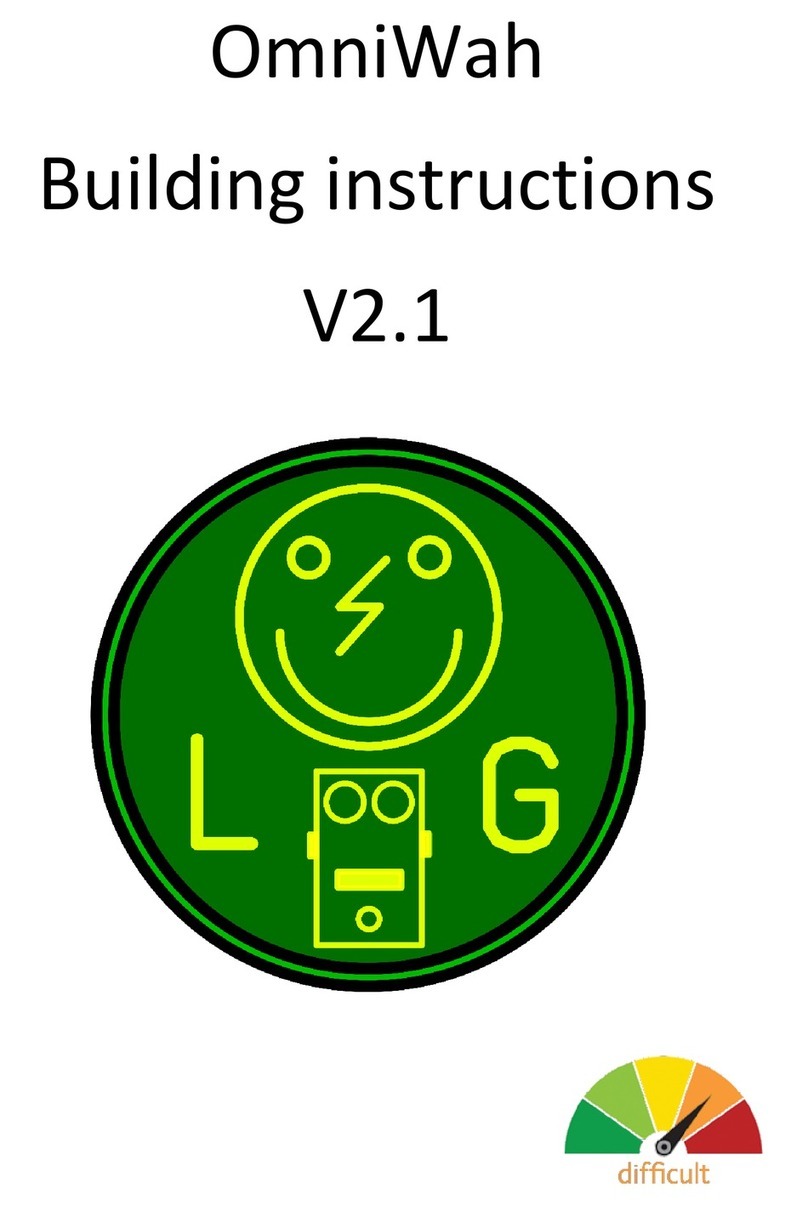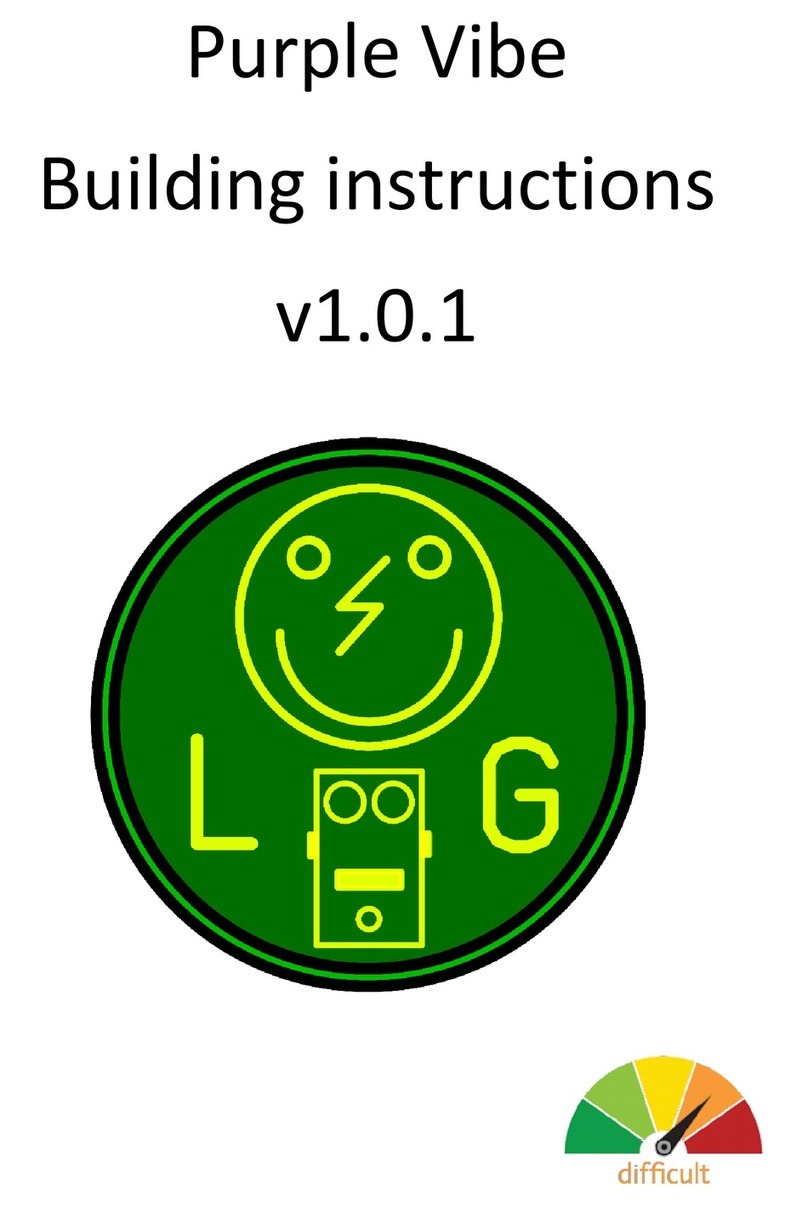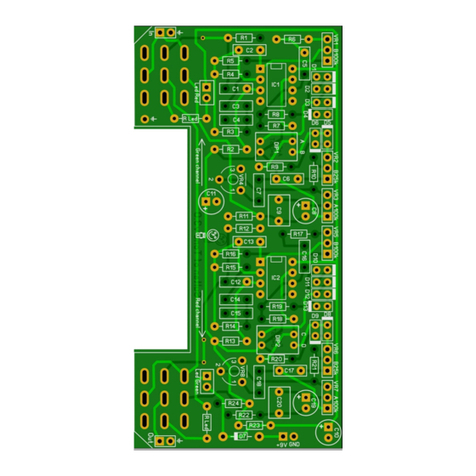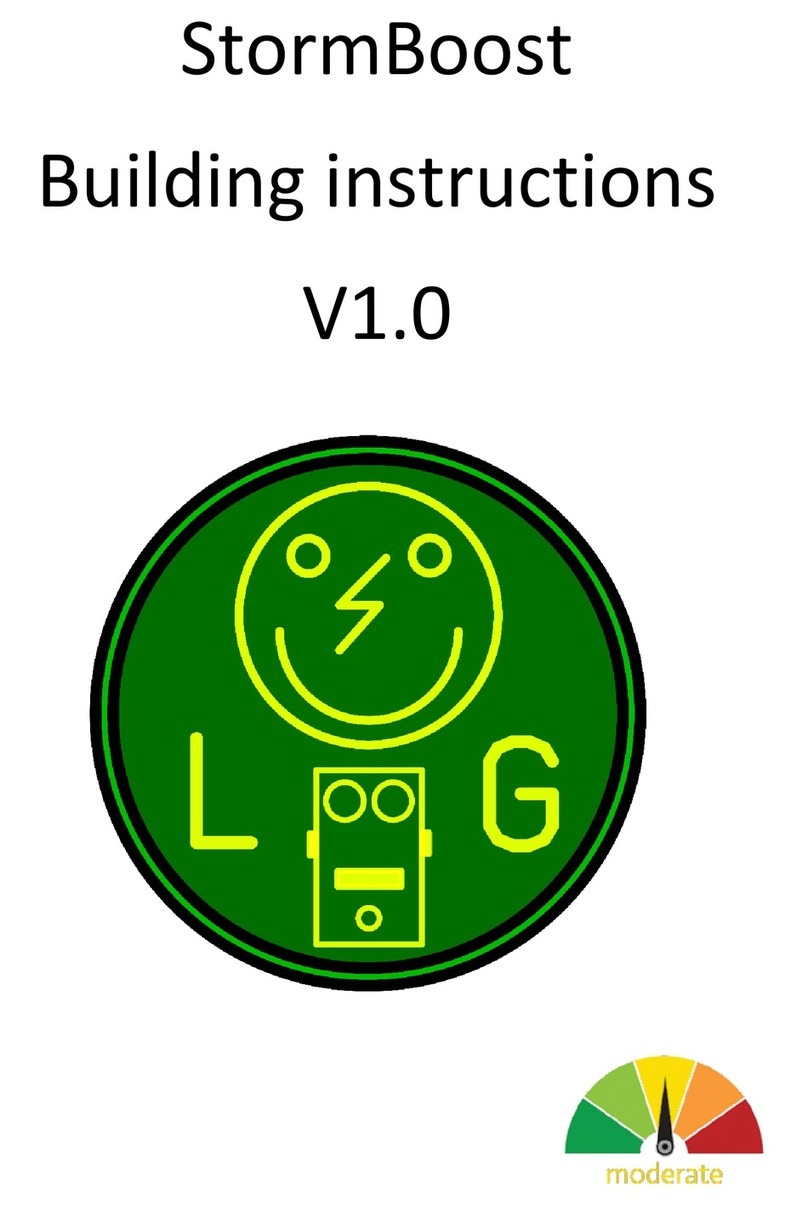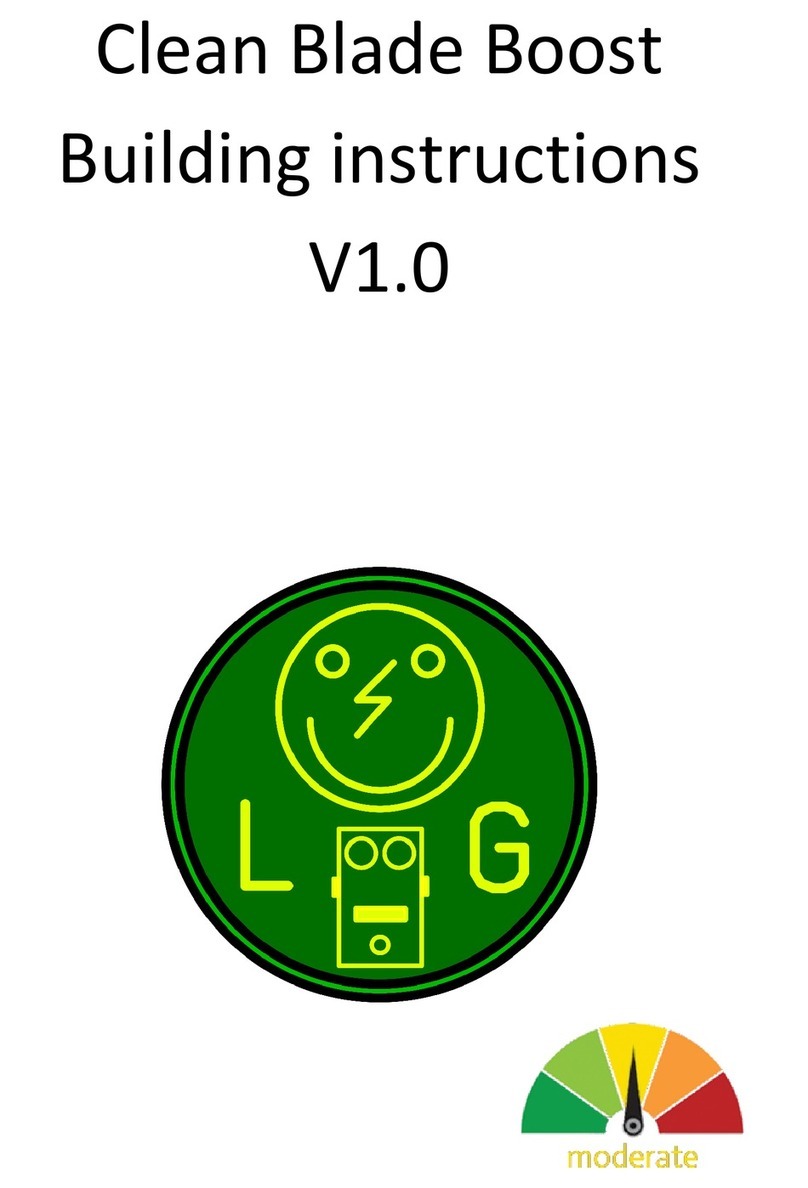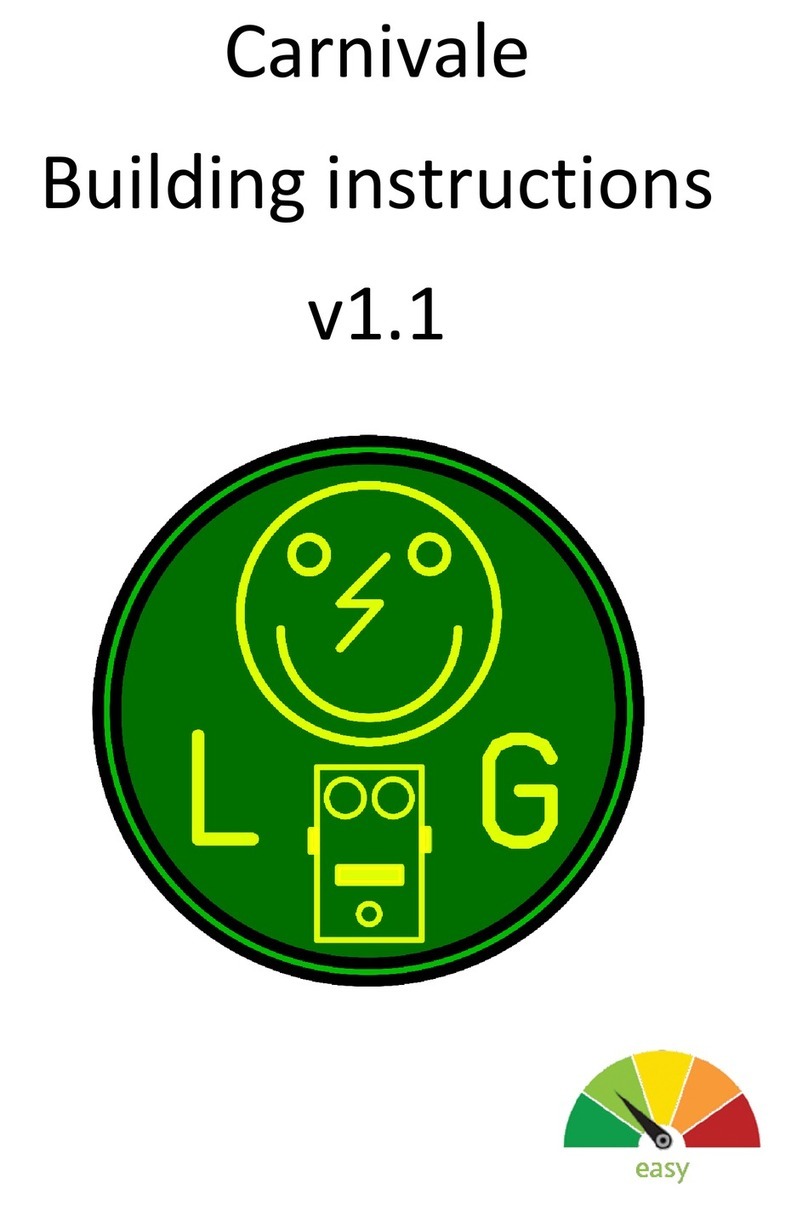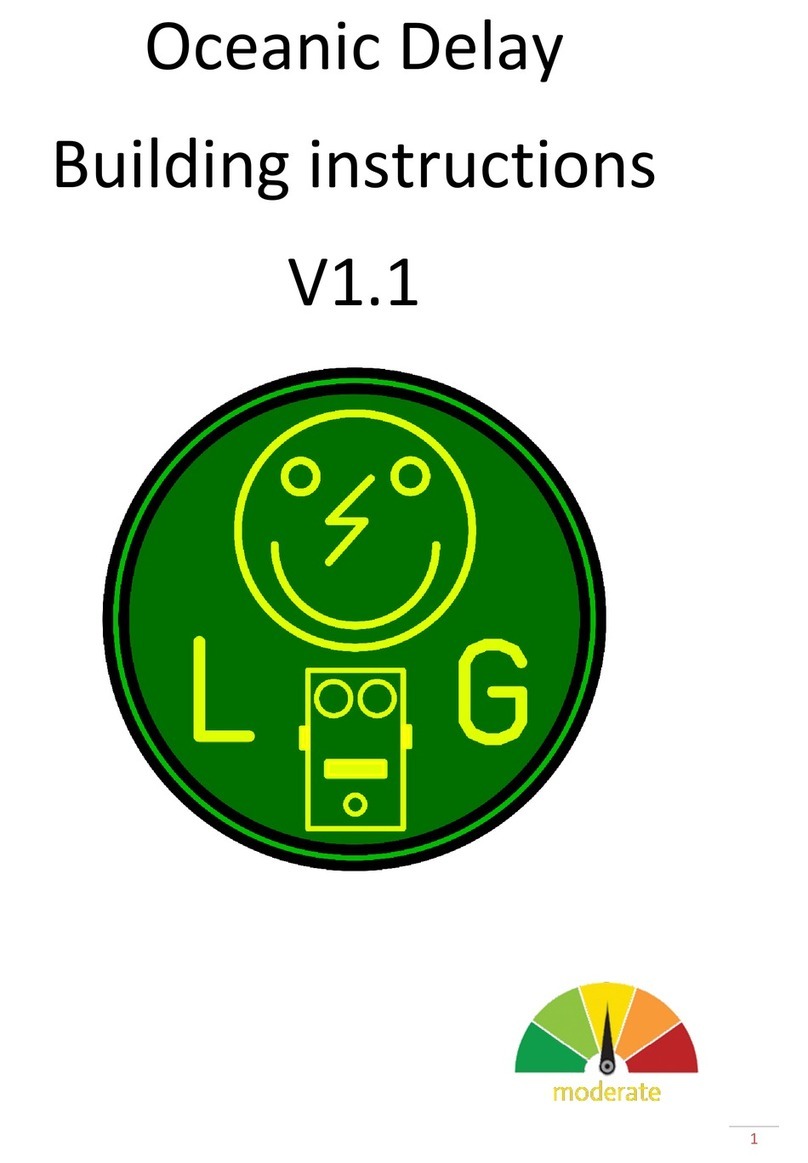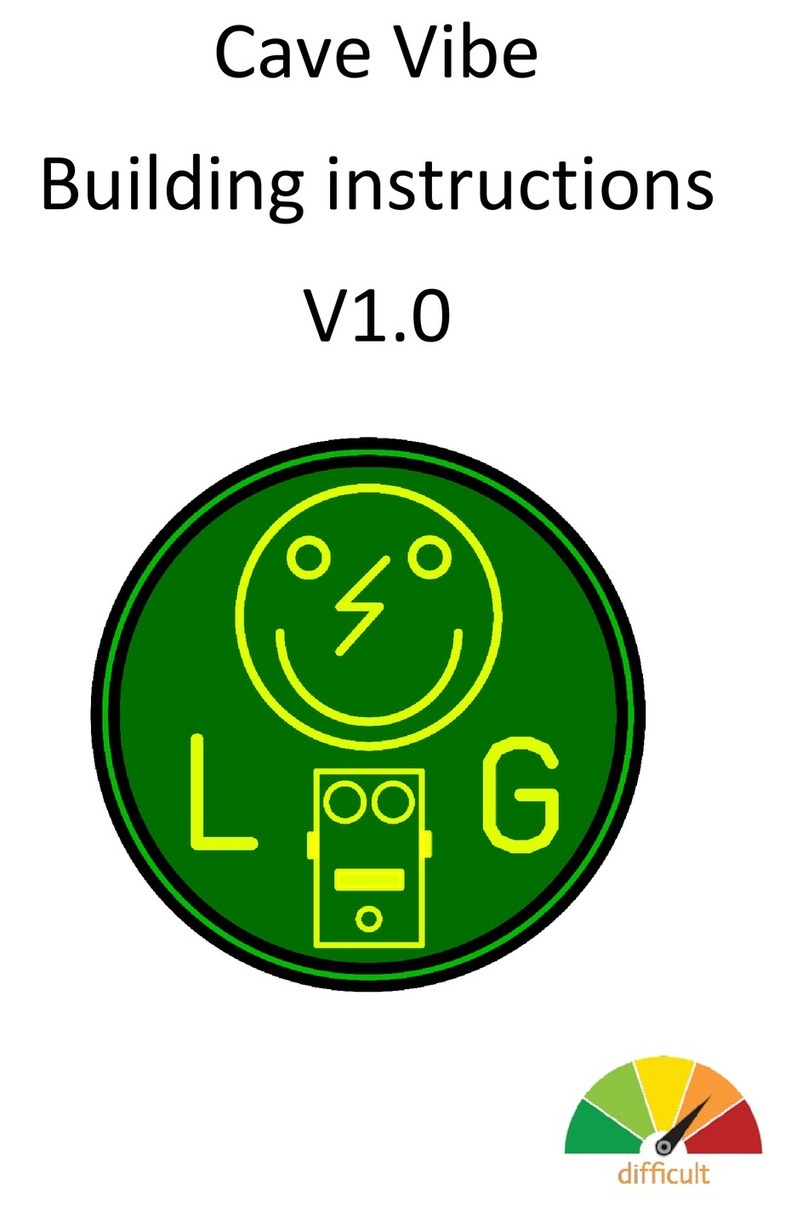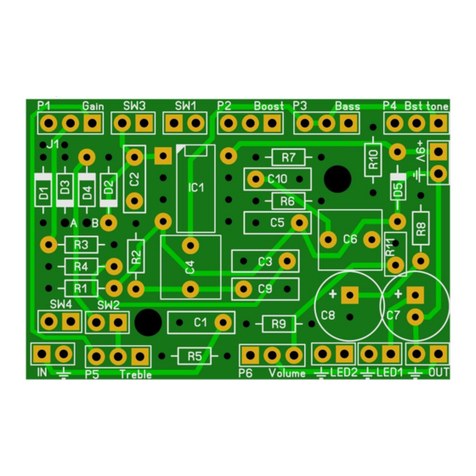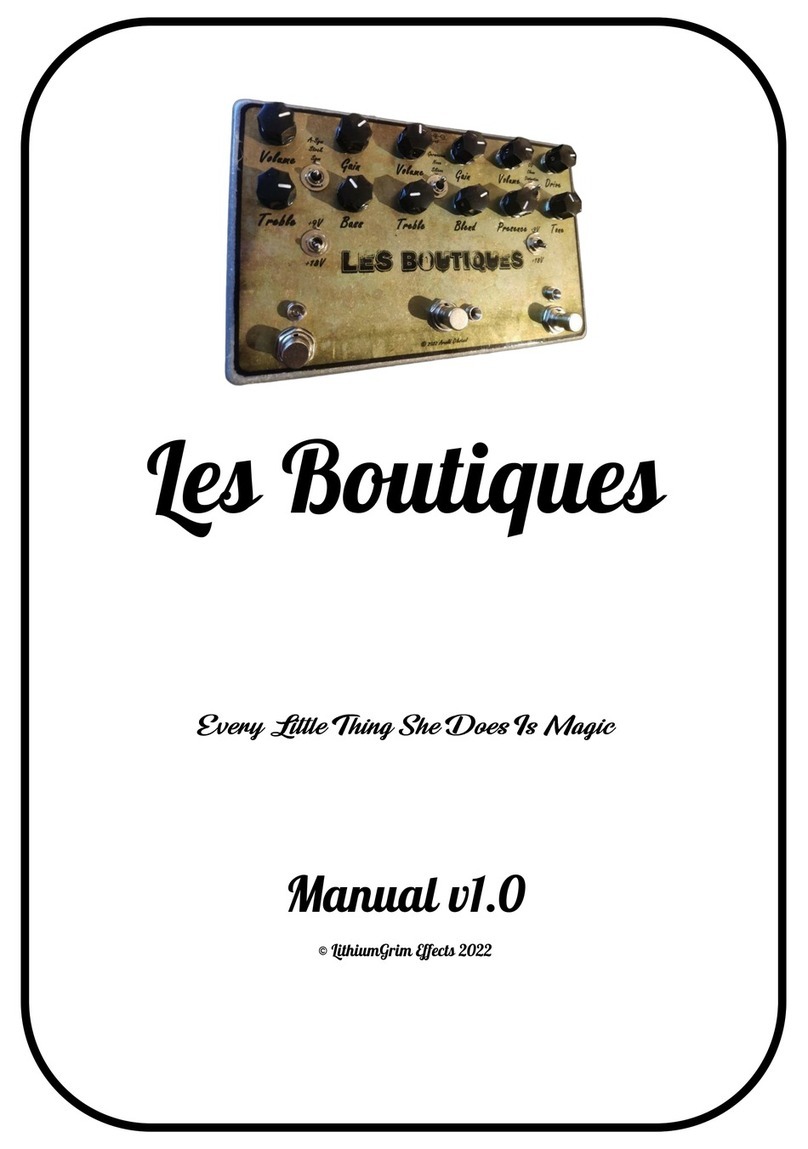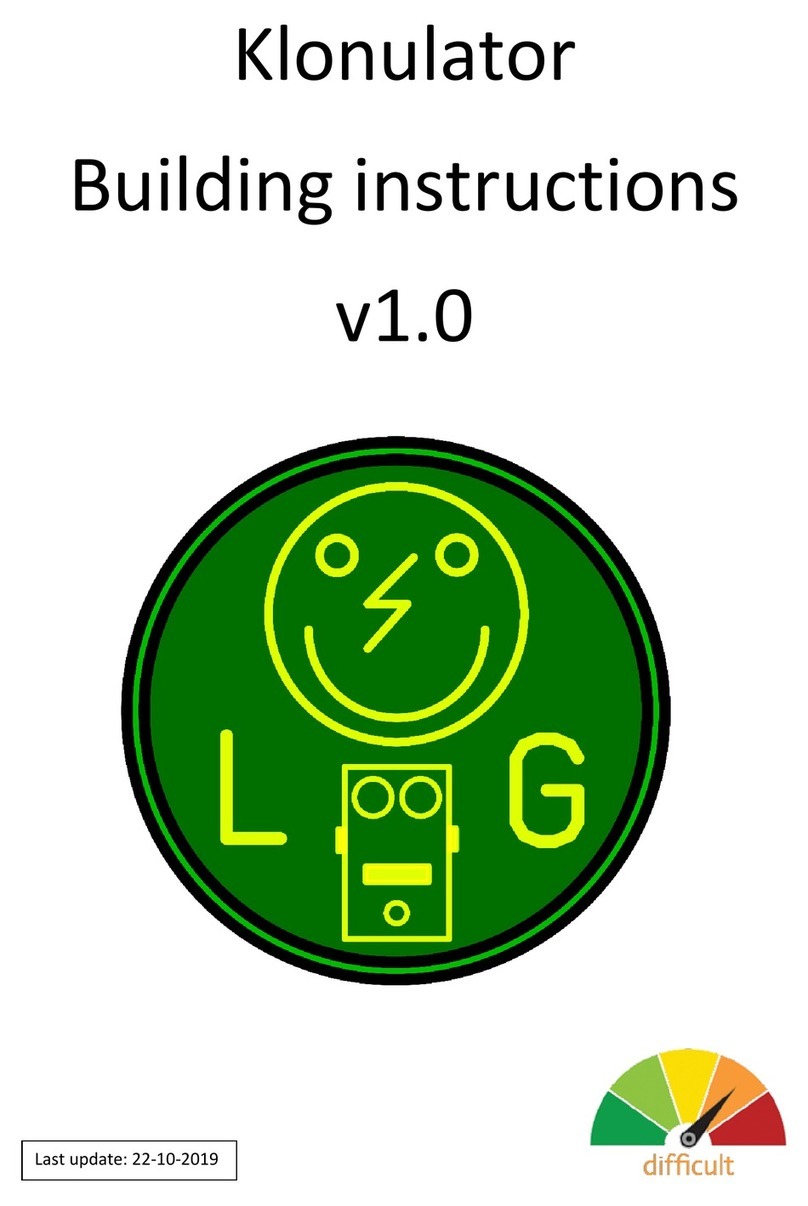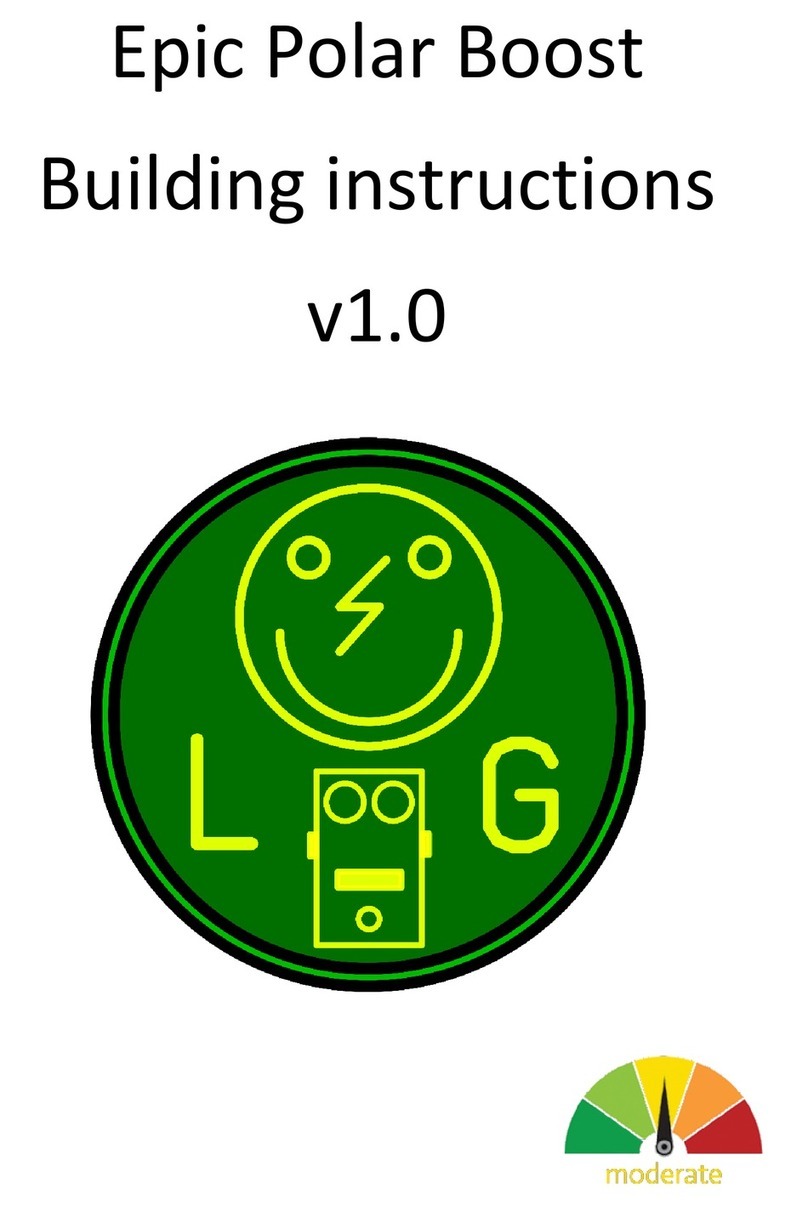Build sequence
Read the modifications section before you start building!
Soldering this board can be very complicated for some people since the solder pads are very close
together. Use a magnifying glass to make the job easier.
The trick to soldering a PCB is to work from small to big components. My building sequence
suggestions in this section are based on the parts I used myself. Sometimes some components are
smaller (or bigger) so always use your own common sense and change the order accordingly. Usually
capacitors can differ a lot in size depending on their rating and value.
Note: Do not blow on your solder in an attempt to cool it down. That can result in a bad join that
might corrode! Also take extra care not to short components.
Start by soldering the resistors and diode.
If you want to experiment with other transistors then you could socket them instead of soldering
them to the board. You’ll need a some 20 SIL sockets, break off the sockets and solder them to the
board. Now is the time to solder these sockets on the PCB as well as the socket for the IC. Place the
transistors and IC once you are finished with all soldering and off board wiring!
Now continue by soldering the MLCC, small SMF/MKT/Wima capacitors.
VR1 is added to enable you to bias Q5. The original pedal does not have that option, but only a fixed
resistor R21 (27k). If you want to be able to bias Q5, set the resistance between pin 1 and 2 of VR1 to
27k before soldering it on the PCB and leave out R21. You can later experiment later by changing the
setting of VR1. If you do not want to bias Q5 then leave out VR1 and insert R21.
Now finish by soldering the transistors (if not socketed), the bigger MKT/WIMA, Silver Mica and the
electrolytic capacitors.
I suggest you now drill the holes in your enclosure so you can use it during the off board wiring. This
PCB is very sensitive to noise! Keep the wires as short as possible and/or use shielding on the input
and output.
Besides the components mentioned in the components table, you will need:
•1 mono and 1 stereo input jack.
•2,1mm DC jack (isolated).
•22 gage stranded hook-up wire.
•1 x LED as status indicator , in your favorite color (or 2 if you want to use a footswitch for the
boost)
•1 x LED holders or 2 if you want to use a footswitch for the boost.
•1 x Footswitch 3PDT (9 pins) or 2 if you want to use a footswitch for the boost.
•Hammond 1590BB case (or similar) in your favorite color. The PCB fits the enclosure in an
upright position. You can of course experiment with other enclosures, but measure twice
before you start drilling!
